Emily in London – not a new TV series, but an historic moment for Australian art. For the very first time, Tate Modern is hosting a solo exhibition by an artist from the former colony. Inevitably, the artist is Emily Kame Kngwarreye – “that old lady” from a tiny community in the very heart of Australia, who passed away in 1996 but left a reputation that has continued to expand across the planet. Artists such as Sidney Nolan, Arthur Boyd and Fred Williams may feature in the Tate’s collections, but no Australian has previously been the subject of a survey at its flagship gallery, Tate Modern, which is currently celebrating its 25th birthday.
One could smell the eucalytus leaves on opening night at the entrance to the Tate’s Turbine Hall, as visitors were greeted with a smoking ceremony and a didgeridoo recital. Inside, a vast, noisy crowd seemed to be almost exclusively (white) Australian.
There’s no denying this is a landmark for the international profile of Australian art, or that Emily was a prodigiously talented painter. The entire event has been wreathed in an aura of celebration, with rapturous early reviews. I hesitate to spoil the party or undermine the tributes being paid to a great artist, but it’s not a strictly black and white affair. There are shades of grey in this story that need to be teased out.
The first concern is the institutional arrogance that has seen the Tate adopt the exhibition framework of the National Gallery of Australia (December 2023 - April 2024), without considering any of the criticisms of that show. Since many of those criticisms appeared in a savagely mutilated article I wrote for the Sydney Morning Herald, I feel obliged to revisit some of them.
Firstly, the spelling of the artist’s name. There has been a good deal of anger over the decision to change “Kame Kngwarrye” into “Kam Kngwarray”, which is the official title of the show in London, as it was in Canberra. This has been done on the unilateral authority of linguist, Jennifer Green, who has played a disproportionately large role in this exhibition.
What makes the change problematic is that Emily herself specifically stated that she wanted the spelling of her name left as it was. Christopher Hodges of Utopia Art Sydney, who was with Emily for the entire eight years of her brief but brilliant career, describes a conversation in which he set out to establish what were the ailing artist’s wishes. She clearly said the spellling of her name should be left alone, “so the little kids will remember who she was.”
I’ve heard the same story from another trusted source, and there’s no reason to doubt this is what Emily wanted. Instead, the spelling has been changed on the authority of a linguist backed with the institutional clout of the NGA. One wonders what the reaction would be if a linguist decided that Sidney Nolan should be spelt “Knowlan” or Arthur Boyd as “Bouyed”. It’s an absurd idea, but as an Aboriginal artist, Emily has been overruled by the powers of anthropology, ethnology and lingustics. It makes a mockery of those demands that she be seen primarily as “contemporary artist”. There are also disturbing racial overtones, as no white Australian artist has ever had their name changed posthumously by a third party.
The second concern is the NGA’s extraordinary attempt to rewrite the story of Emily’s career by downplaying and often omitting mention of the first retrospective of 1998, put together by Margo Neale for the Queensland Art Gallery, and subsequently shown in Sydney, Melbourne and Canberra. Neale was also responsible for the exhibition that travelled to Osaka and Tokyo in 2008, initiated by the enthusiasm of Japanese curator, Akira Tatehata, who says he cried when he first saw Emily’s work.
Both Neale and Tatehata are written out of story in the Tate catalogue, which has been reprinted from the NGA template with the addition of an essay by Tate curator, Kimberley Moulton, that begins with the alarming construction: “what we currently know as Australia”. Is there any other name under consideration? Surely, there was no single word, among hundreds of different language groups, that described the entire continent.
The timeline in the catalogue confirms that the omissions are deliberate. Every exhibition is listed with the names of curators, including NGA curators, Hetti Perkins and Kelli Cole. The exceptions are the largest, most important exhibitions. The ultimate indignity is an entry that tells us how the 2008 show at the National Museum of Australia “subsequently travels” to Osaka and Tokyo. In reality, the show was put together for Osaka and Tokyo, with the NMA season added as a victory lap, following its success in Japan.
This egregious error, which could have been avoided by simply reading the dates in the catalogues, was included in the NGA publication and has been repeated in the Tate version. I mentioned this error in my 2023 review, but it has not been corrected in the timeline (revised for the new catalogue!), by the NGA curators and editors, or their counterparts at the Tate.
This is an appalling display of carelessness that falsifies history and requires a correction slip. Whether one eventuates will show us if the Tate believes Emily is important enough to warrant getting their facts straight.
My third concern grows out of the second. By downplaying the significance of the exhibitions in Osaka and Tokyo, the curators have removed one of Emily’s greatest triumphs. The entire story of that tour is told by Andrew Bailey, in a yet-to-be-published book on Emily. The project grew out of Tatehata’s personal commitment, and Neale’s ability to sell the idea to a group of sceptical Japanese sponsors. The show was not expected to do well, but it broke the record for a contemporary exhibition at the National Art Centre, Tokyo, outdrawing Andy Warhol. Even today the Japanese curators observe an “Emily Day” in recognition of its success. It remains the only large-scale survey devoted to an Australian artist by a Japanese museum.
To ignore those shows is to patronise the country that was first to host an international survey. German curator, Uli Krempel, had wanted to do one in Hannover even before the 1998 show at the QAG but was ultimately discouraged. It took enormous determination to make the Japanese tour happen. Why is England so important, but Japan of no value? Another colonial legacy?
The show in Osaka was almost a third larger than the NGA and Tate exhibitions. It began with all the vital information about the artist, her community, and Aboriginal life clustered on one floor of the gallery, accompanied by a single painting – Earth’s Creation (1994), the largest work Emily ever produced. The picture, now owned by Nicola Forrest, was showcased at the Venice Biennale in 2015, and is often viewed as the artist’s masterpiece.
That painting has been left out of the exhibitions in Canberra and London, even though it was available for loan. The reason given, when I inquired of curator, Kelli Cole in 2023, was “there were some issues”. The only possible issue seems to be that it was sold by Fred Torres, the artist’s nephew, who appears to be a discredited dealer in the eyes of the NGA curators.
Continuing down one level in Osaka, the first works met at the entrance to the show were Emily’s last paintings: a series of small, misty, strangely moving panels created at the end of her life. These paintings have also been omitted from the Canberra and London shows - suggesting a novel where the last chapter is missing. Once again, the problem seems to be the involvement of another out-of-favour dealer, Hank Ebes. If there is a better reason Id like to hear it. Any suggestion the works were not good enough would be laughed out of sight.
Neale’s approach in Osaka was truly daring. She restaged Emily’s career in reverse, putting the last works at the beginning, and ending wth Emu Woman, the artist’s first successful painting of 1988-89 – featured at the start of the Tate exhibition. From one gallery to the next, the Osaka show generated a constant round of surprises.
I thought of the excitement generated by that radical hang as I wandered through the Tate. Although the new exhibition is being widely praised, the design is conventional and plodding. Almost immediately, one encounters a large room hung with similarly sized dot paintings, most of them featuring a very muddy palette. The effect is drab and repetitious, when the best of Emily’s work feels like a burst of pure beauty. Take the time to look closely at individual paintings and they begin to offer up their secrets, but the first impression is discouraging.
As Emily allegedly painted more than 3,000 pictures, the curators were spoiled for choice. She seems to have painted the ‘tougher’ works for Rodney Gooch and Chris Hodges, and the more repetitive ones for Don and Janet Holt, at nearby Delmore Downs station. Her Delmore output was much larger, and often rushed, although there are also notable masterpieces that came from that connection, including the stunning Big Yam Dreaming (1995) which was donated to the NGV.
The exhibition warms up as one moves from one room to the next, although the Tate keeps the light levels lower than the NGA, taking the edge off some of the brighter works. Purists would say this is the correct approach, even if most viewers adore those dazzling colours. The paintings are also hung a little lower than they are at home, making a slight, hard-to-describe difference in the way we respond to them.
Although the public would never know, the bulk of the works in this show have come from Delmore or Gooch and Hodges but omitting the major pieces from Torres and Ebes takes a chunk out of the survey. The dealer who is sitting pretty with this selection is D’Lan Davidson, whose advice was sought in Canberra, and may also be felt in the Tate show. As Davidson never met Emily, he could hardly be considered a superior source of knowledge to Hodges. Best practice would have been for the curators to take a more independent stance and keep all the dealers at arm’s length.
Too many works in the Tate show made me suspect they were included primarily because of the people who owned them, not because they were the most outstanding examples available. The line between museums and commercial interests is extremely thin nowadays and getting thinner as governments try to remove themselves from the funding of cultural organisations. This laissez-faireapproach may have benefits for dealers and collectors, but it casts a shadow on any museum’s objectivity.
Looking at the commercial shows being held in London, nobody could deny Emily’s money-making potential. D’Lan Contemporary has an exhibition in association with Pace Gallery: Emily Kam Kngwarray: My Country, that includes three or four major pictures that could easily have gone into the Tate. Across the road, Unit X Gallery is hosting Tjukurrpa: The Dreaming, which features a broad range of paintings by Emily, along with other wellknown Aboriginal artists. JGM Gallery has We Call it Urapuntja, featuring work by six contemporary painters from Emily’s homeland. There’s more at Rebecca Hossack’s, with Motorbike Paddy, Emily Kam Kngwarray and the Family of Utopia. Anybody who takes a sudden fancy to Emily’s work after seeing the Tate show, has plenty of options as to where to buy.
If we had to ask what makes Emily stand out from other Indigenous artists, it’s the way she transcended this category and brought a whole new dimension to contemporary art. She can’t be too closely compared to the Abstract Expressionists, but this is the way many admirers have tended to view her work – as a continuation of that journey with added Indigenous wisdom. She is an “impossible modernist”, as Margo Neale says, whose paintings have the power to upend our conventional ideas about art. Tatehata saw this early when he fought to show her work in Japan. For the Tate to come to the party some 17 years later, it required a massive rearrangement of their own institutional priorities, which now include a dedicated focus on indigenous art.
One wonders, however, if this new inclusiveness isn’t also a new source of art snobbery, as our celebration of the spiritual insights of so-called First Peoples frequently devolves into a form of intellectual tourism. Although no-one is going to run off and join the community in the desert, we love to reflect on these exotic beings and their close affinities with nature. In this sense, almost twenty years after her death, Emily is being treated as an international icon for ‘decolonisation’. One feels a certain sympathy for the more emotional response of Akira Tatehata, who tried repeatedly to explain and categorise the old lady’s work, finally giving up in despair, and exclaiming: “She’s just a genius!”
Emily Kam Kngwarray
Tate Modern, London, until 11 January 2026
Fondation Opale, Switzerland, 14 June – 15 Nov. 2026
Published in slightly edited form in The Australian, 26 July 2025


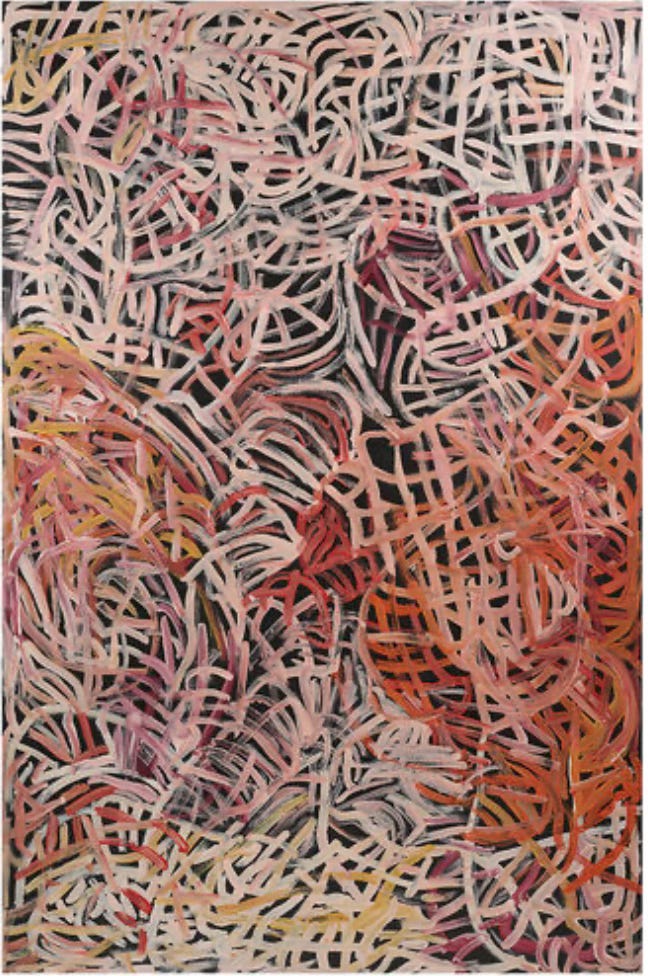
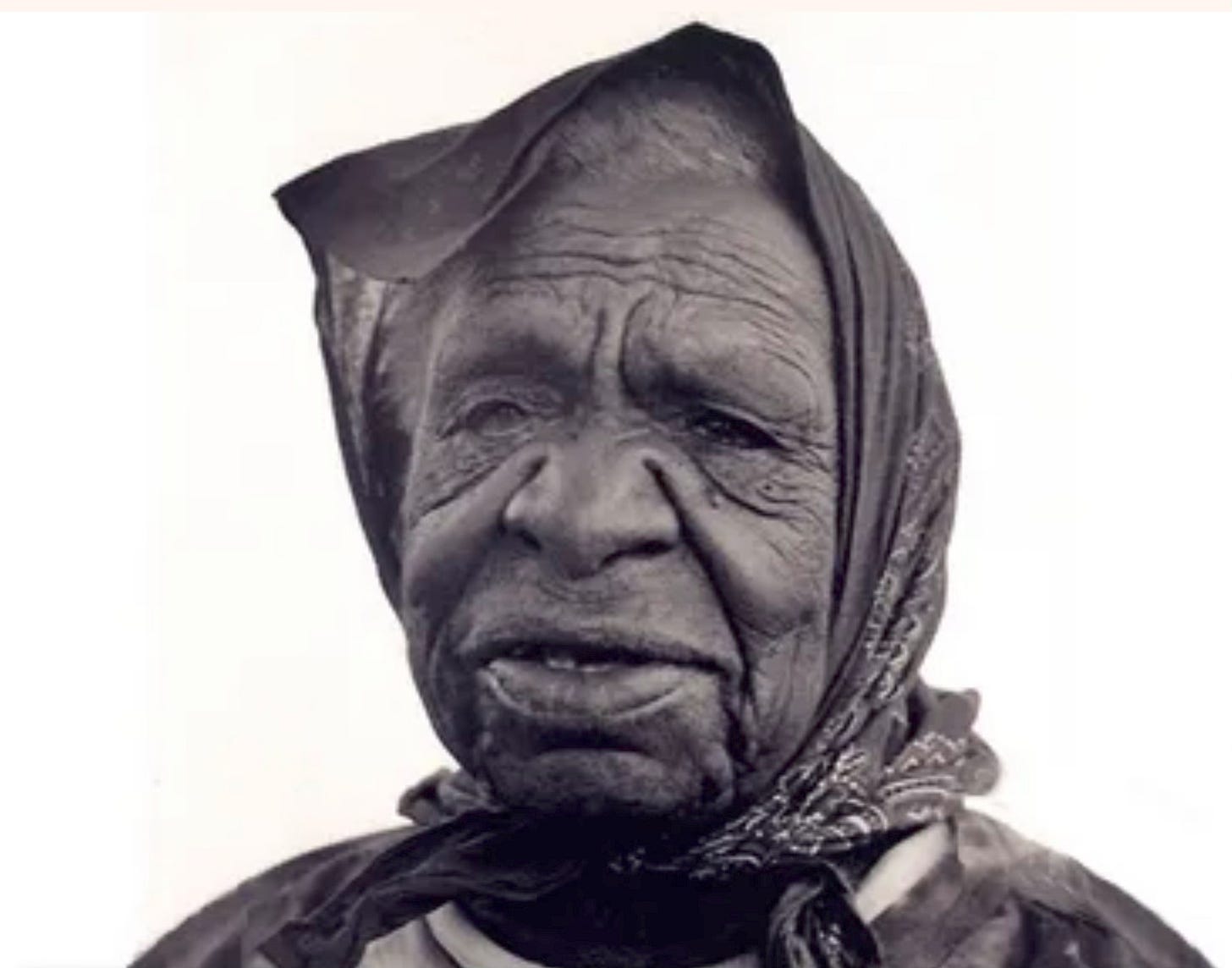
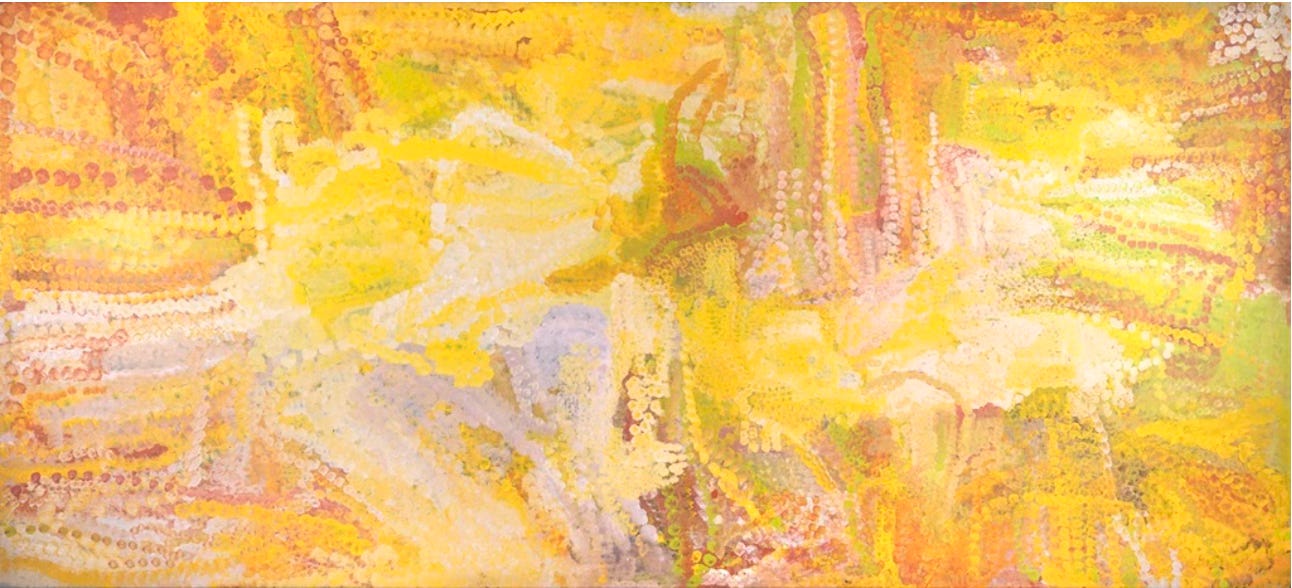
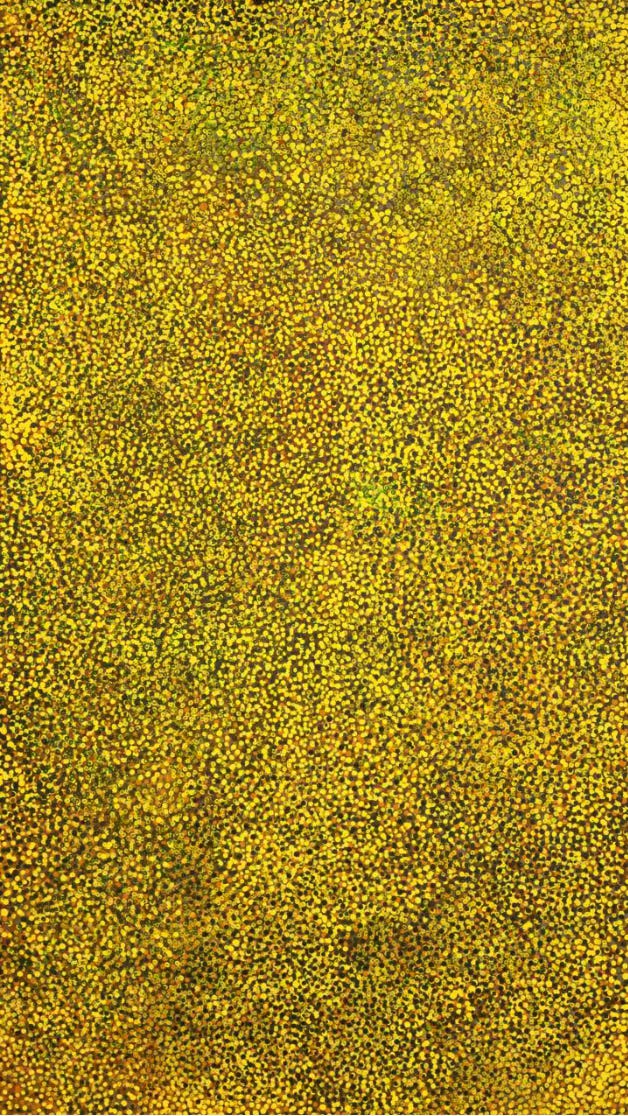
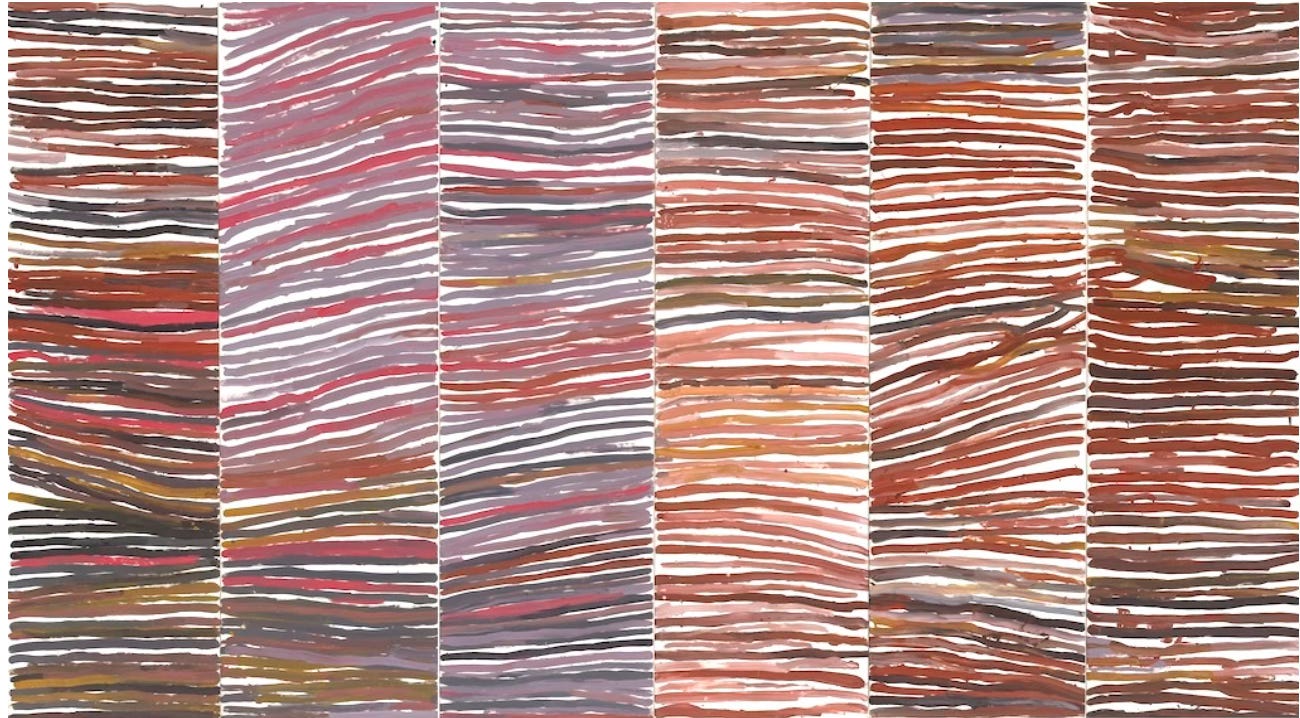
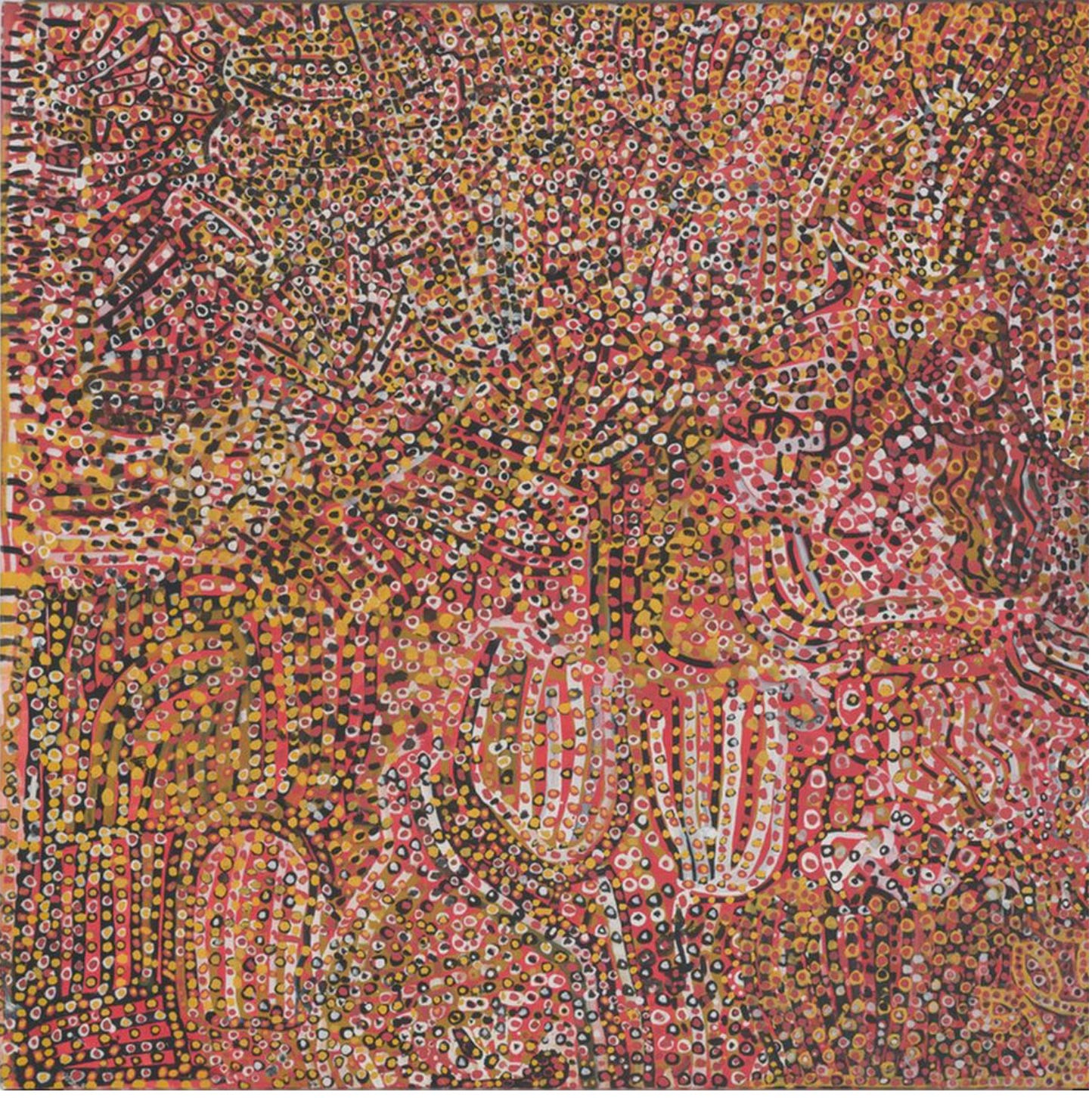
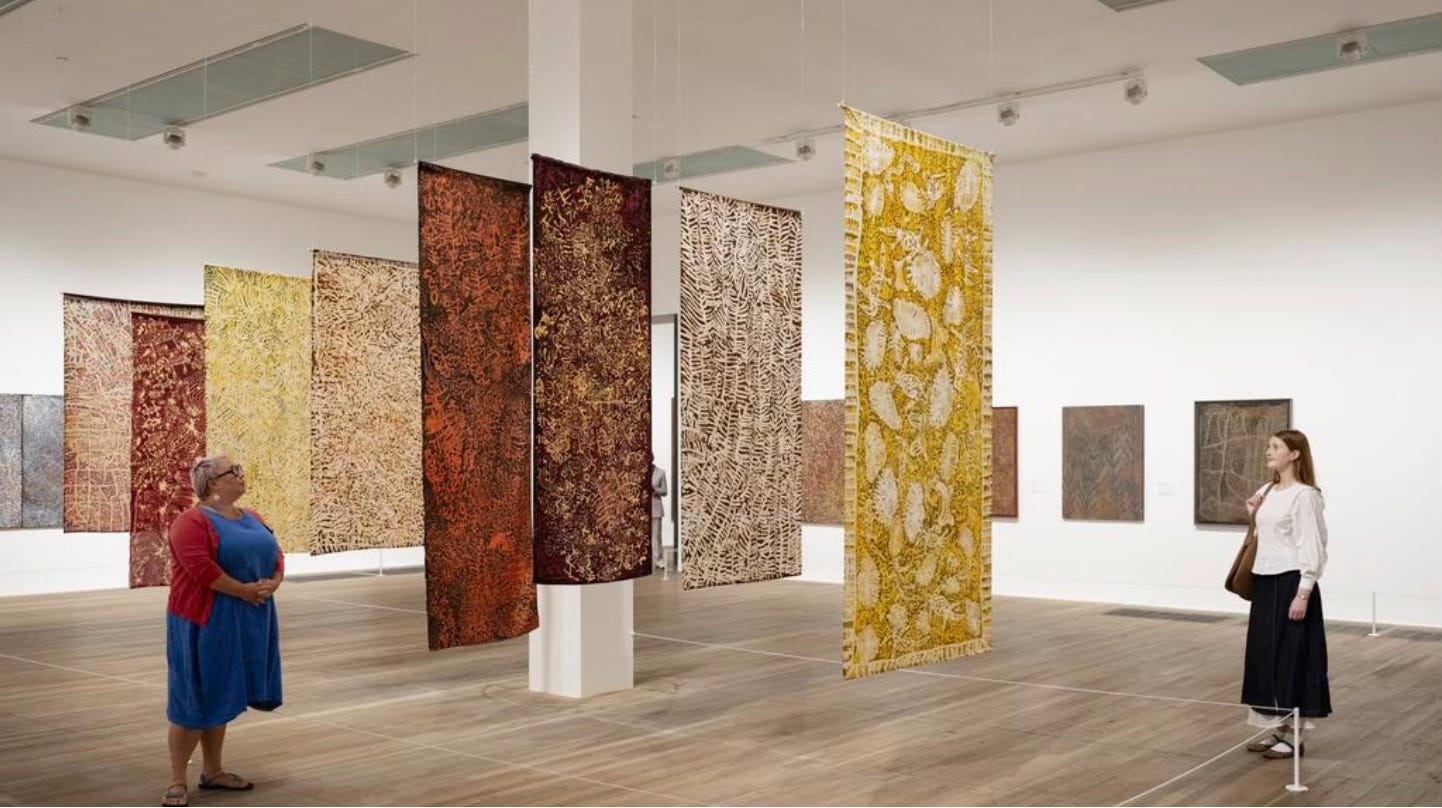
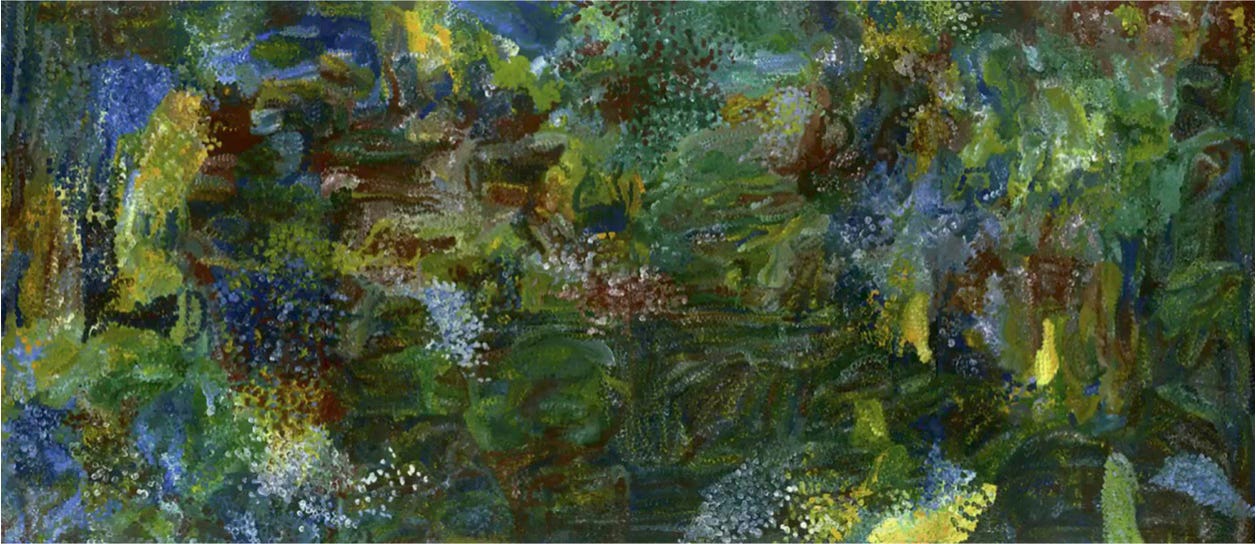
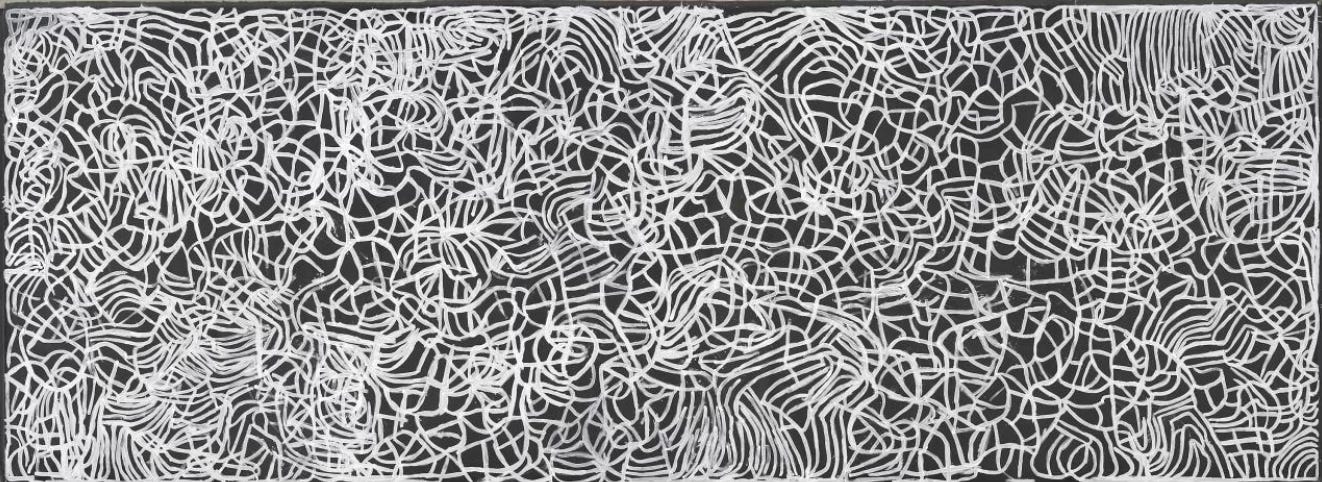
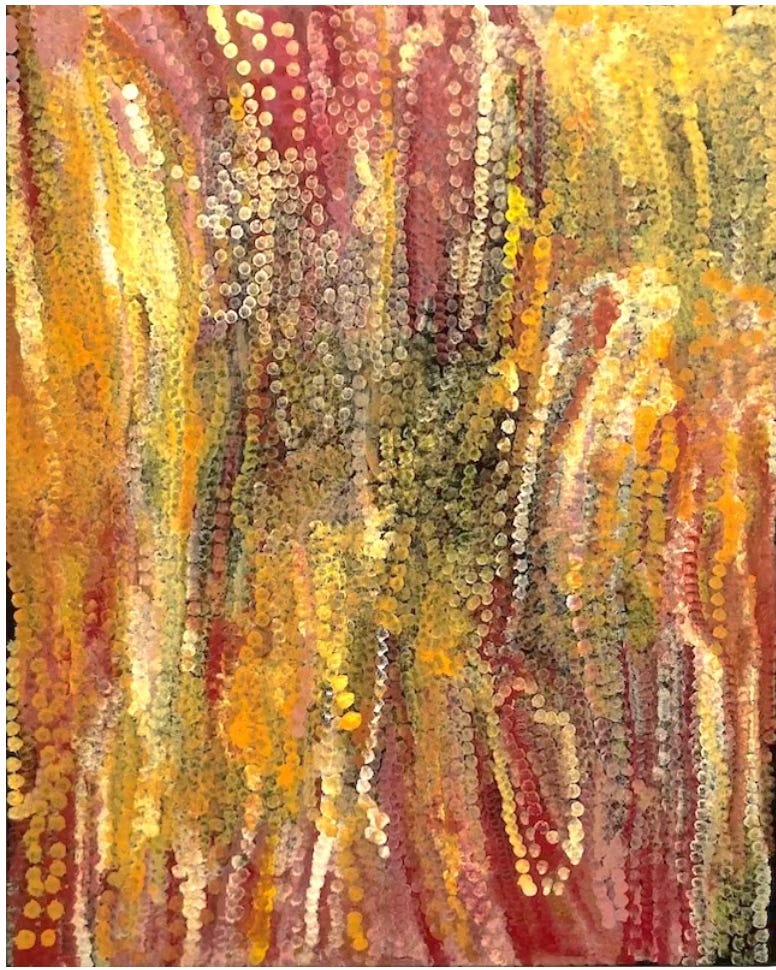
Great article, John. I’ve noticed the clumsy use of the phrase “so-called Australia” creeping into gallery wall text with no further explanation. Beyond the logical absurdity (yes, all named concepts are, in fact, so-called), it’s a weird rhetorical sneer ... mocking a term that has no viable alternative, but doing it with a sarcastic eye-roll, as if we’re all expected to silently nod along while curators quietly retire the name of a UN nation state.
Extremely interesting article.